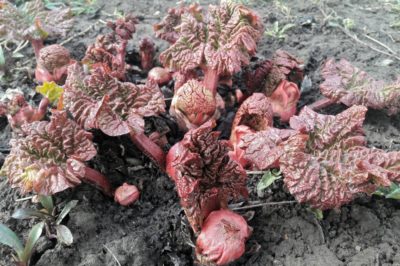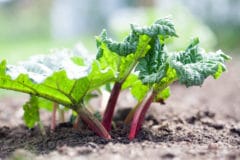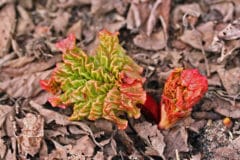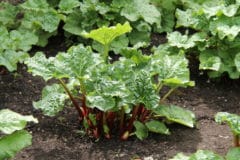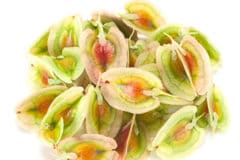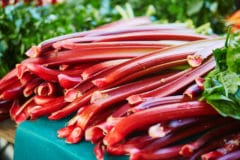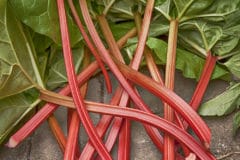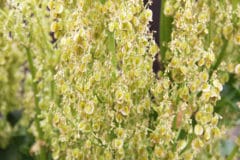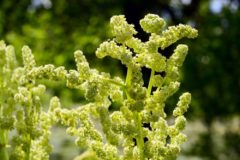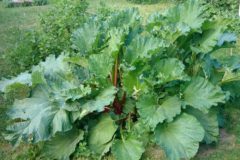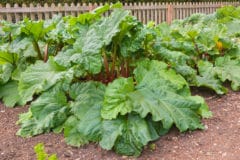The Mother of Roots and Stalks
The crown of the rhubarb plant is what both generates roots and produces the edible stalks of the plant. Somewhat round and long, the crown resembles a rather misshapen cylinder, with roots or root starts on its bottom and new growth buds on the top.
Sitting about two inches deep in the ground, the crown is usually brown in color, while the buds are often red or off-white. The crown must be healthy and properly fed and cared for to produce strong roots and tasty stalks.
How to Feed Your Rhubarb Crowns
Rhubarb is at its best when it’s well fed. The crown will need plenty of nutrition to survive its dormancy in the winter, as well as to create new growth for the growing season.
The best way to feed your crown is a multi-faceted approach:
- Compost in the planting hole at transplant.
- A straw/rotted manure mulch over the ground after planting.
- Plenty of water in the warmer months.
- Additional compost or manure during the growing season.
- Harvesting at the correct time to ensure nutrients are available to the crown in the fall.
How to Transplant a Crown
When you have bought crowns from a garden supply store, or have divided crown sections from your existing plants, transplanting requires a little effort to ensure a viable rhubarb plant.
Start with a hole about four inches deep and slightly bigger around than your crown. Mix some compost, manure, or organic fertilizer into the earth you’ve dug out and use it to create a small mound, about two inches high.
Set your crown or crown segment on top of this, allowing the roots to drape over the sides. Add more compost or manure to your soil and use the mix to fill the hole the rest of the way. Cover over your transplant with a mulch of straw and manure to help retain moisture and continue feeding your plant as it grows.
Sectioning Your Crown
For the health of your rhubarb plants, divide the crowns every three to four years. When you do this, you simply dig up your crowns and cut them into smaller sections, with two or more roots per piece. Then, transplant the sections, or share them with your fellow gardeners.
Well-tended rhubarb will continue to grow and produce for many years, often a decade or longer. Proper feeding and maintenance of the crown is a main component of your plant’s success.
